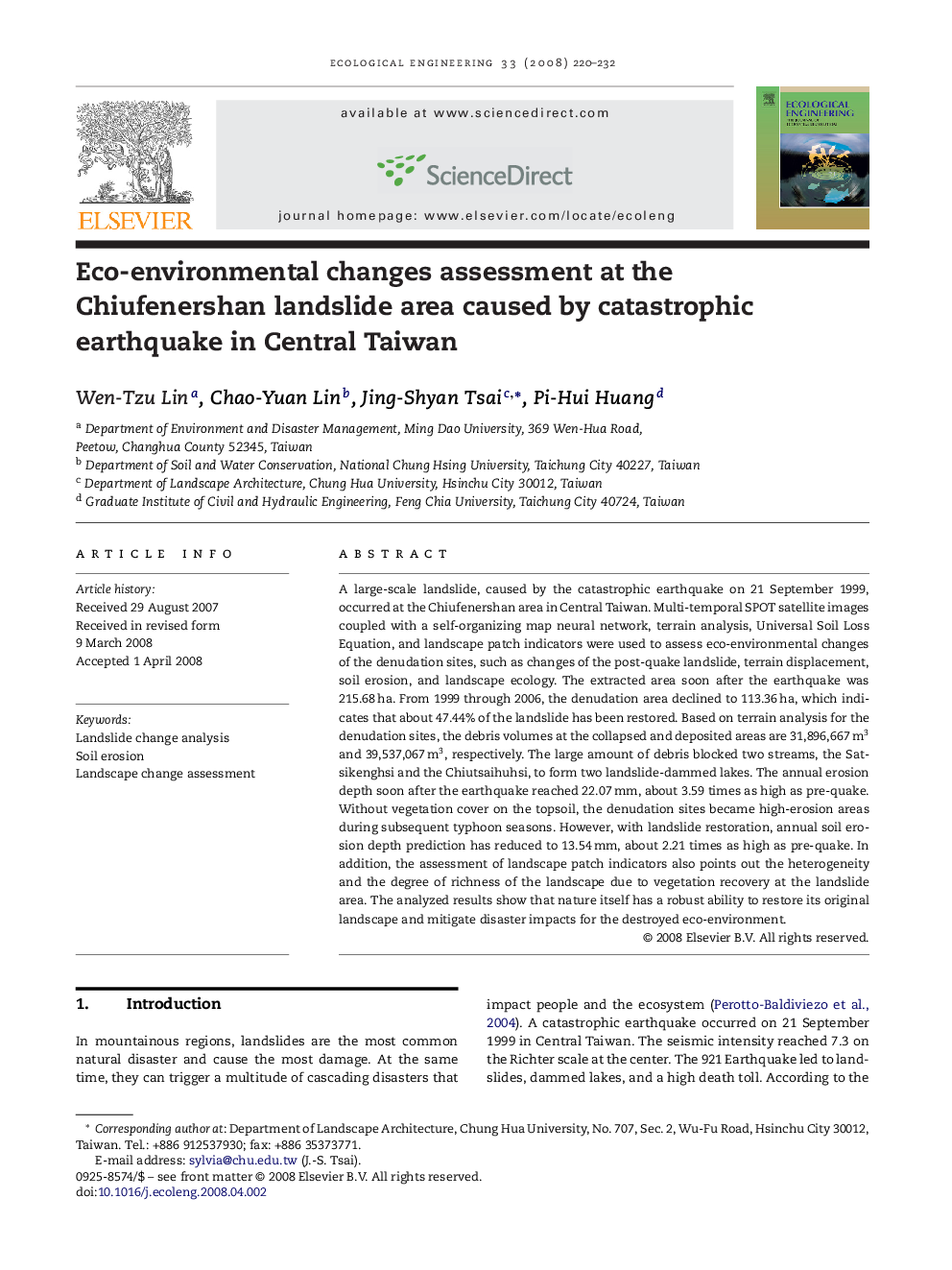| Article ID | Journal | Published Year | Pages | File Type |
|---|---|---|---|---|
| 4390791 | Ecological Engineering | 2008 | 13 Pages |
Abstract
A large-scale landslide, caused by the catastrophic earthquake on 21 September 1999, occurred at the Chiufenershan area in Central Taiwan. Multi-temporal SPOT satellite images coupled with a self-organizing map neural network, terrain analysis, Universal Soil Loss Equation, and landscape patch indicators were used to assess eco-environmental changes of the denudation sites, such as changes of the post-quake landslide, terrain displacement, soil erosion, and landscape ecology. The extracted area soon after the earthquake was 215.68Â ha. From 1999 through 2006, the denudation area declined to 113.36Â ha, which indicates that about 47.44% of the landslide has been restored. Based on terrain analysis for the denudation sites, the debris volumes at the collapsed and deposited areas are 31,896,667Â m3 and 39,537,067Â m3, respectively. The large amount of debris blocked two streams, the Satsikenghsi and the Chiutsaihuhsi, to form two landslide-dammed lakes. The annual erosion depth soon after the earthquake reached 22.07Â mm, about 3.59 times as high as pre-quake. Without vegetation cover on the topsoil, the denudation sites became high-erosion areas during subsequent typhoon seasons. However, with landslide restoration, annual soil erosion depth prediction has reduced to 13.54Â mm, about 2.21 times as high as pre-quake. In addition, the assessment of landscape patch indicators also points out the heterogeneity and the degree of richness of the landscape due to vegetation recovery at the landslide area. The analyzed results show that nature itself has a robust ability to restore its original landscape and mitigate disaster impacts for the destroyed eco-environment.
Keywords
Related Topics
Life Sciences
Agricultural and Biological Sciences
Ecology, Evolution, Behavior and Systematics
Authors
Wen-Tzu Lin, Chao-Yuan Lin, Jing-Shyan Tsai, Pi-Hui Huang,
